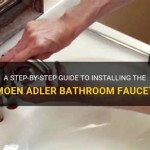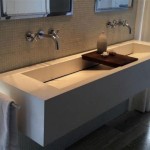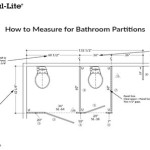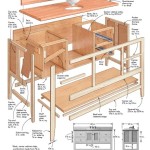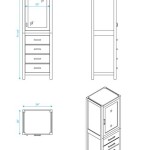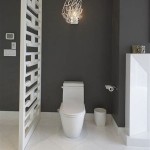Embracing Timeless Elegance: The Retro Look Bathroom Vanity
The incorporation of retro design elements within contemporary homes offers a unique blend of nostalgia and modern functionality. Among the various spaces that can benefit from this design approach, the bathroom stands out as an ideal canvas for incorporating retro-inspired fixtures and furniture. The retro look bathroom vanity, in particular, serves as a focal point, instantly transforming the space into a haven of vintage charm while maintaining the practicality required of a modern bathroom.
Selecting a retro bathroom vanity involves careful consideration of various factors, including the overall aesthetic, available space, material choices, and functional requirements. Understanding the nuances of retro design styles, from mid-century modern to art deco, is crucial for making informed decisions that align with the desired outcome. This article delves into the essential aspects of incorporating a retro look bathroom vanity, exploring its design principles, material options, installation considerations, and its impact on the overall bathroom aesthetic.
Understanding Retro Design Styles for Bathroom Vanities
The term "retro" encompasses a broad range of design styles, each characterized by distinct features and influences. Identifying the specific retro style that resonates with the homeowner's preferences is a crucial first step in selecting the right bathroom vanity. Several popular retro design styles frequently adapted for bathroom vanities include:
Mid-Century Modern: Emerging in the post-World War II era, mid-century modern design emphasizes clean lines, minimalist forms, and functional aesthetics. Vanities in this style typically feature simple geometric shapes, tapered legs, and a focus on natural materials like wood. Colors are often muted or earthy, with occasional pops of vibrant hues like turquoise or yellow. Hardware is typically understated and metallic, often made of brushed nickel or chrome.
Art Deco: Popular in the 1920s and 1930s, Art Deco design is characterized by its opulence, geometric patterns, and luxurious materials. Art Deco-inspired vanities often feature bold geometric shapes, such as stepped designs or stylized curves. Materials like marble, glass, and chrome are frequently incorporated to create a glamorous and sophisticated look. Rich colors like black, gold, and deep jewel tones are common.
Hollywood Regency: This style, prominent in the 1930s and 1940s, embodies a sense of glamour and theatricality. Hollywood Regency vanities often feature mirrored surfaces, intricate detailing, and luxurious materials like lacquer and velvet. Bold colors and patterns are common, and the overall look is designed to be eye-catching and dramatic.
Vintage Farmhouse: This style evokes a sense of rustic charm and simplicity, often inspired by rural living. Vintage farmhouse vanities typically feature distressed wood finishes, simple designs, and vintage-inspired hardware. Materials like reclaimed wood and cast iron are frequently used to create an authentic feel. Colors are often muted and earthy, with a focus on natural tones.
By exploring these diverse retro styles, homeowners can identify the specific aesthetic that aligns with their vision for the bathroom. This knowledge will guide their choices regarding the vanity's design, materials, and overall appearance.
Material Choices and Considerations
The choice of materials plays a pivotal role in achieving the desired retro look for a bathroom vanity. Different materials contribute to distinct aesthetic qualities and functional characteristics. Common material options for retro-inspired bathroom vanities include:
Wood: Wood is a versatile material that can be adapted to various retro styles. Solid wood vanities offer durability and a natural aesthetic, while wood veneers provide a more cost-effective option. The type of wood used can significantly impact the vanity's appearance. For example, walnut and teak are often associated with mid-century modern design, while painted wood is common in vintage farmhouse styles. The finish applied to the wood, whether it's a glossy lacquer or a distressed paint, further contributes to the overall retro aesthetic.
Metal: Metal accents, such as chrome or brushed nickel hardware and legs, can enhance the retro look of a bathroom vanity. Chrome is particularly associated with Art Deco and mid-century modern designs, while brushed nickel offers a more understated and timeless appeal. Metal frames and legs can add a touch of industrial chic to a vintage-inspired bathroom.
Stone: Stone countertops, such as marble or granite, can elevate the look of a retro bathroom vanity. Marble is particularly well-suited for Art Deco and Hollywood Regency styles, adding a touch of luxury and sophistication. Granite offers a more durable and practical option, while still maintaining a classic aesthetic. The color and veining of the stone should be carefully considered to complement the overall design of the vanity.
Laminate: Laminate is a cost-effective and durable material that can mimic the look of wood or stone. High-quality laminates can be used to create retro-inspired vanities with a variety of finishes and patterns. Laminate is particularly well-suited for bathrooms with high moisture levels, as it is resistant to water damage and staining.
Glass: Glass elements, such as mirrored surfaces or glass countertops, can add a touch of glamour and elegance to a retro bathroom vanity. Mirrored surfaces are particularly common in Hollywood Regency designs, creating a sense of spaciousness and visual interest. Glass countertops can be used to create a sleek and modern look, while still maintaining a retro vibe.
The selection of materials should be carefully considered in relation to the desired retro style, the available budget, and the functional requirements of the bathroom. A well-chosen combination of materials can create a bathroom vanity that is both aesthetically pleasing and practical.
Integrating Retro Vanities into Modern Bathroom Designs
Incorporating a retro look bathroom vanity into a modern bathroom requires careful planning and execution. The goal is to create a cohesive design that blends the charm of vintage elements with the functionality and convenience of modern fixtures and features. Successful integration involves considering the following factors:
Color Palette: The color palette of the bathroom should complement the retro style of the vanity. Consider using colors that are characteristic of the chosen retro era. For example, pastel colors like mint green and pink are often associated with the 1950s, while bold colors like orange and brown are common in the 1970s. Neutrals like white, black, and gray can provide a versatile backdrop for a retro vanity, allowing it to stand out as a focal point. Using color matching tools can aid in ensuring harmony with existing tile or paint colors.
Fixture Selection: The choice of faucets, showerheads, and other bathroom fixtures can significantly impact the overall retro aesthetic. Consider selecting fixtures that are inspired by the chosen retro era. For example, chrome faucets with porcelain handles are common in Art Deco bathrooms, while brushed nickel fixtures with clean lines are associated with mid-century modern designs. Matching the finish and style of the fixtures to the vanity's hardware can create a cohesive and polished look.
Tile Choices: The tile chosen for the bathroom walls and floors can further enhance the retro aesthetic. Consider using tile patterns and colors that are characteristic of the chosen retro era. For example, subway tile is a classic choice for vintage bathrooms, while geometric tile patterns are common in Art Deco designs. Using contrasting grout colors can accentuate the tile pattern and add visual interest. Consider patterned tiles that evoke specific periods, such as mosaic tiles for a mid-century feel.
Accessories and Décor: Accessories and décor items can play a crucial role in completing the retro look of a bathroom. Consider incorporating vintage-inspired mirrors, lighting fixtures, and storage solutions. Retro-themed artwork, such as vintage posters or framed advertisements, can add a touch of personality to the space. Using vintage-inspired soap dispensers, toothbrush holders, and towels can further enhance the retro aesthetic. Incorporating plants in vintage-style pots can add a touch of natural beauty to the bathroom.
Lighting: Lighting is essential for creating the right ambiance in a retro bathroom. Consider using vintage-inspired lighting fixtures, such as sconces, pendant lights, or vanity lights. The type of lightbulb used can also impact the overall aesthetic. For example, Edison bulbs can add a warm and inviting glow to a vintage-inspired bathroom, while LED bulbs can provide a more energy-efficient and modern option. Ensure adequate task lighting around the vanity for grooming and other activities.
By carefully considering these factors, homeowners can seamlessly integrate a retro look bathroom vanity into a modern bathroom, creating a space that is both stylish and functional. The key is to balance the charm of vintage elements with the convenience and comfort of modern amenities.

Vintage Bathroom How To Achieve The Look Abi Interiors
:strip_icc()/102385394-32613a644bc540af89a053da11689979.jpg?strip=all)
19 Vintage Bathroom Ideas For Retro Style

Pin On Bathrooms

Vintage Bathroom How To Achieve The Look Abi Interiors
:strip_icc()/101928912-11c748f911de41c89c142d7251c85409.jpg?strip=all)
19 Vintage Bathroom Ideas For Retro Style
8 Stylish Vintage Bathroom Decorating Ideas Upcyclist

Updating Our 1950s Bathroom With Style Checking In Chelsea

Buy Antique Style Bathroom Vanities Modern

27 Statement Bathroom Vanity Ideas Photos Of Vanities

Designers Remake Vintage Cabinets Into Bathroom Vanities
Related Posts
